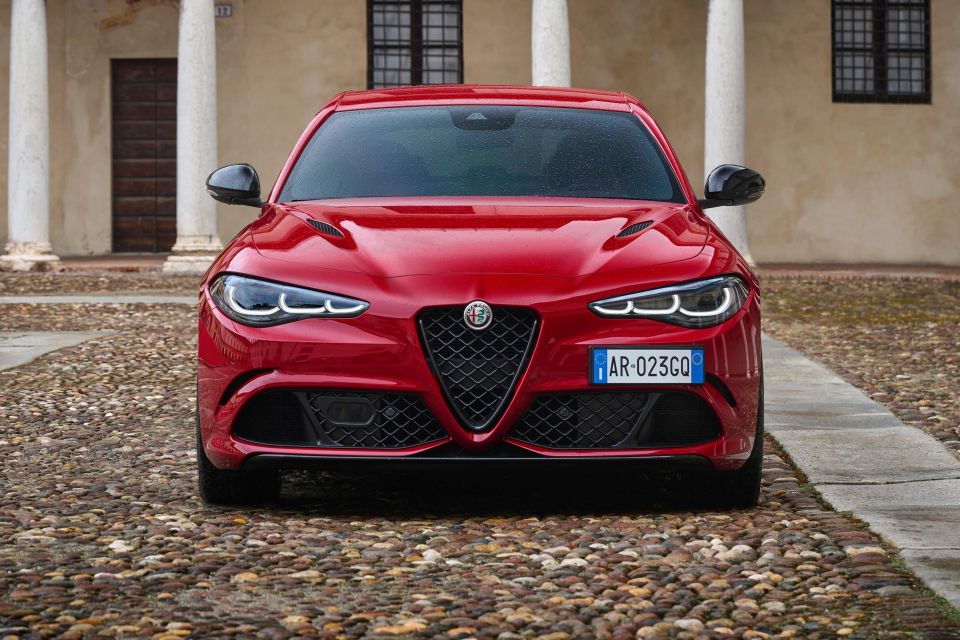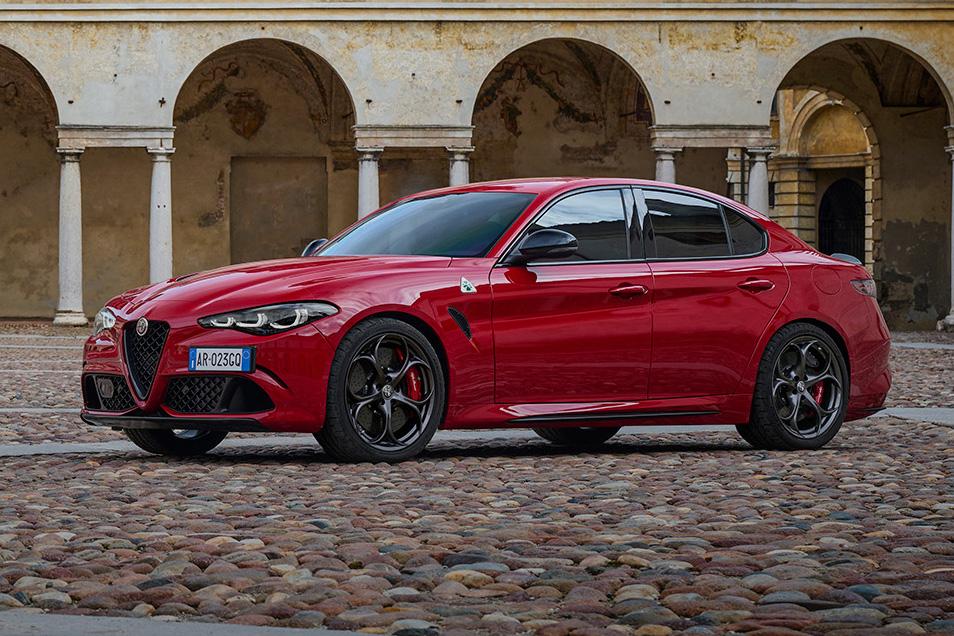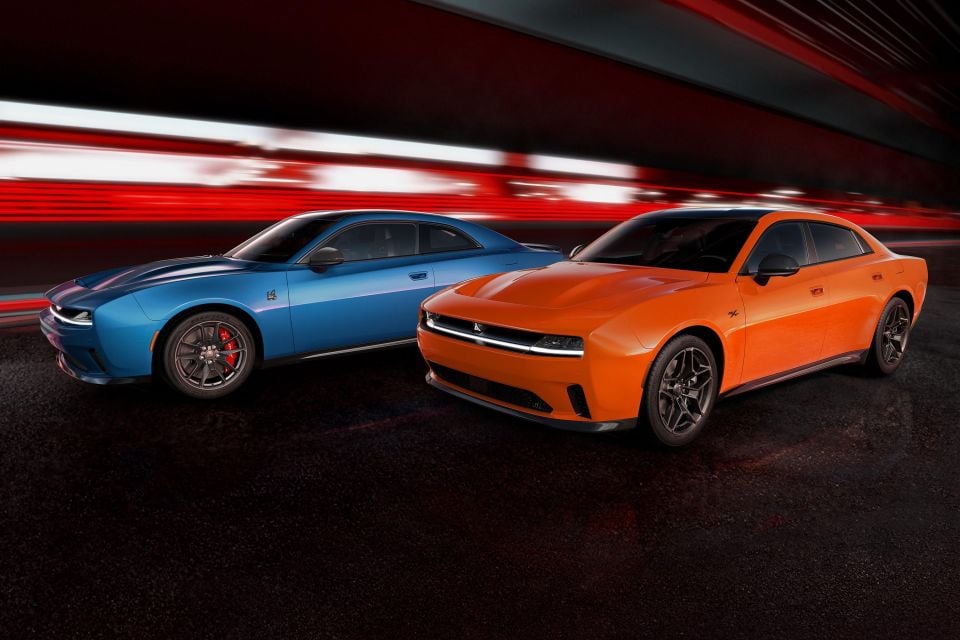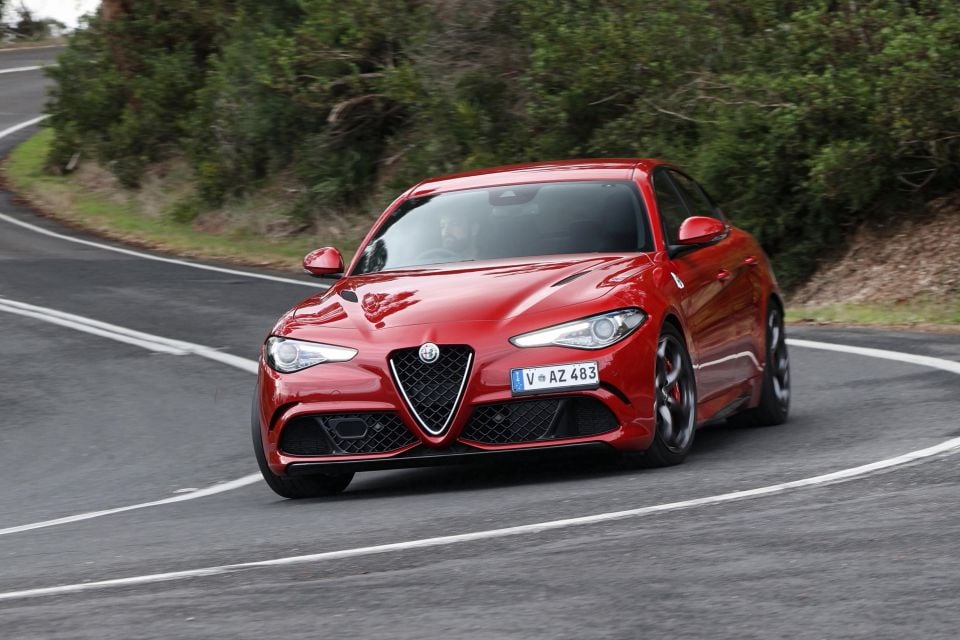

Max Davies
2026 Toyota HiAce review
2 Hours Ago
Electric snakes and cloverleaves are on their way, with the new electric Alfa Romeo Stelvio EV due 2025, and the Giulia EV coming in 2026.

Journalist


Journalist
The next-generation Alfa Romeo Stelvio crossover and Alfa Romeo Giulia sedan have been confirmed for 2025 and 2026 launches, respectively.
In a presentation last week Stellantis – the parent company behind Alfa Romeo, as well as a pantheon of other brands – detailed some of the storied Italian brand’s plans for the next few years.
It starts this year with the April launch of the Milano crossover. Based on the same STLA Small (CMP2) architecture as the Jeep Avenger, Fiat 600 and Lancia Ypsilon, not only will the Milano be the smallest crossover yet from the brand, but it will be the first Alfa Romeo to be available with an all-electric drivetrain.

In the second half of 2025, Alfa will unveil the second-generation Stelvio crossover, which will be the first car based on the STLA Large platform to be built or sold in Europe.
Features include an 800V electric architecture, the “STLA Brain” software system, and STLA SmartCockpit user interface.
Following in 2026 is the new Giulia sedan which, like the Stelvio, rides on the STLA Large platform, and will be built in the Cassino factory, located halfway between Rome and Naples.
By 2027, Alfa Romeo will phase out its petrol drivetrains, leaving it as an EV-only brand. Given the timing of its switch to running exclusively on electric power, petrol-powered versions of the Stelvio and Giulia are unlikely.
While Alfa Romeo has yet to reveal any details about the drivetrains that will be offered in the new Stelvio and Giulia, Stellantis has previously confirmed the STLA Large architecture can house battery packs with between 85kWh and 118kWh of capacity.
It also supports single-motor rear wheel drive and multi-motor all-wheel drive layouts.

The Dodge Charger Daytona, the first production vehicle based on the STLA Large architecture, made its debut last week, and is scheduled to start trundling off the line in Windsor, Ontario from the middle of the year.
Although the new Charger will initially be available with a number of all-electric drivetrains, including the top-of-the-range with a 500kW/850Nm Scat Pack with Direct Connection Stage 2 kit, the American muscle sedan and coupe will be available with a 3.0-litre twin-turbo straight-six petrol engine from early 2025.
All Charger Daytona models revealed so far use a 400V electrical architecture, whereas the new Stelvio looks set to be the first car to use a 800V architecture in the STLA Large platform.
According to Dodge, the top-spec Daytona Scat Pack has a 0-60mph (0-97km/h) time of 3.3 seconds, and can complete the quarter mile (400m) in 11.5 seconds.

Using a 800V setup will reportedly increase performance further, with a 0-100km/h time of around 2.0 seconds possible.
For reference, the Quadrifoglio versions of the Stelvio and Giulia, powered by a 2.9-litre twin-turbo V6 engine, need 3.8s or 3.9s to hit the century mark.
Other benefits of a 800V system include faster charger speeds and, potentially, lighter wiring. With the 5.25m long Charger Daytona weighing an eye-popping 2648kg, hopefully the smaller 800V Alfas are a little lighter.
MORE: Everything Alfa Romeo Stelvio MORE: Everything Alfa Romeo Giulia
Where expert car reviews meet expert car buying – CarExpert gives you trusted advice, personalised service and real savings on your next new car.
Derek Fung would love to tell you about his multiple degrees, but he's too busy writing up some news right now. In his spare time Derek loves chasing automotive rabbits down the hole. Based in New York, New York, Derek loves to travel and is very much a window not an aisle person.


Max Davies
2 Hours Ago


William Stopford
18 Hours Ago


Ben Zachariah
19 Hours Ago


Derek Fung
20 Hours Ago


Matt Campbell
1 Day Ago


William Stopford
2 Days Ago